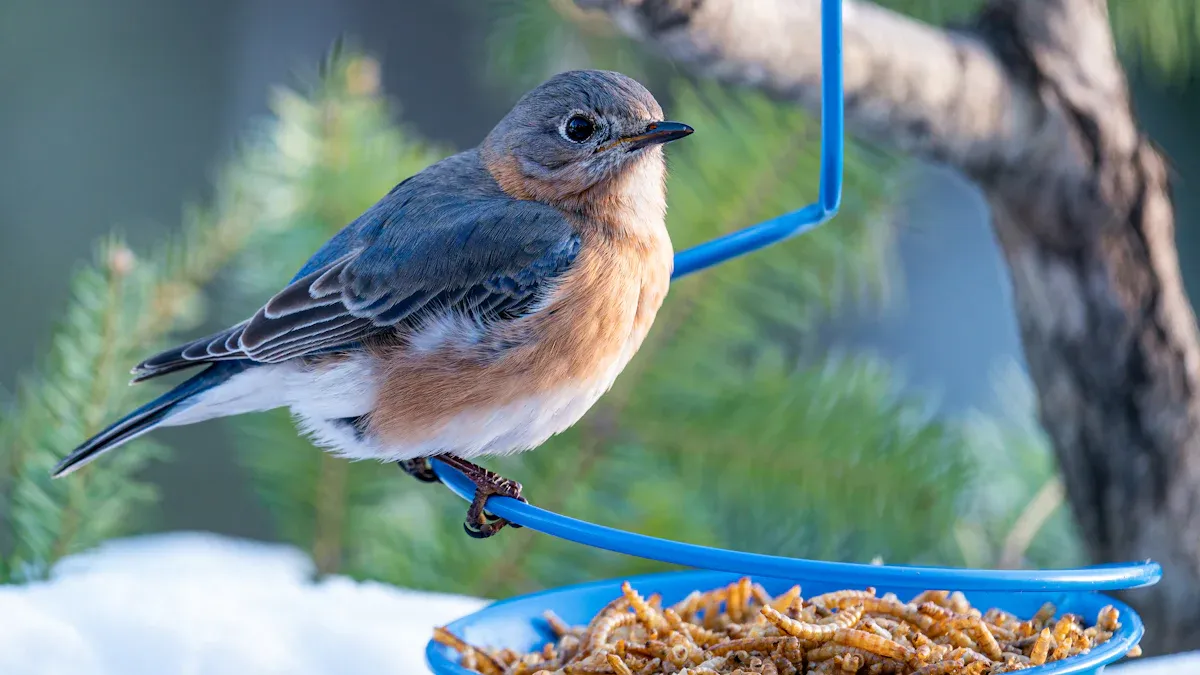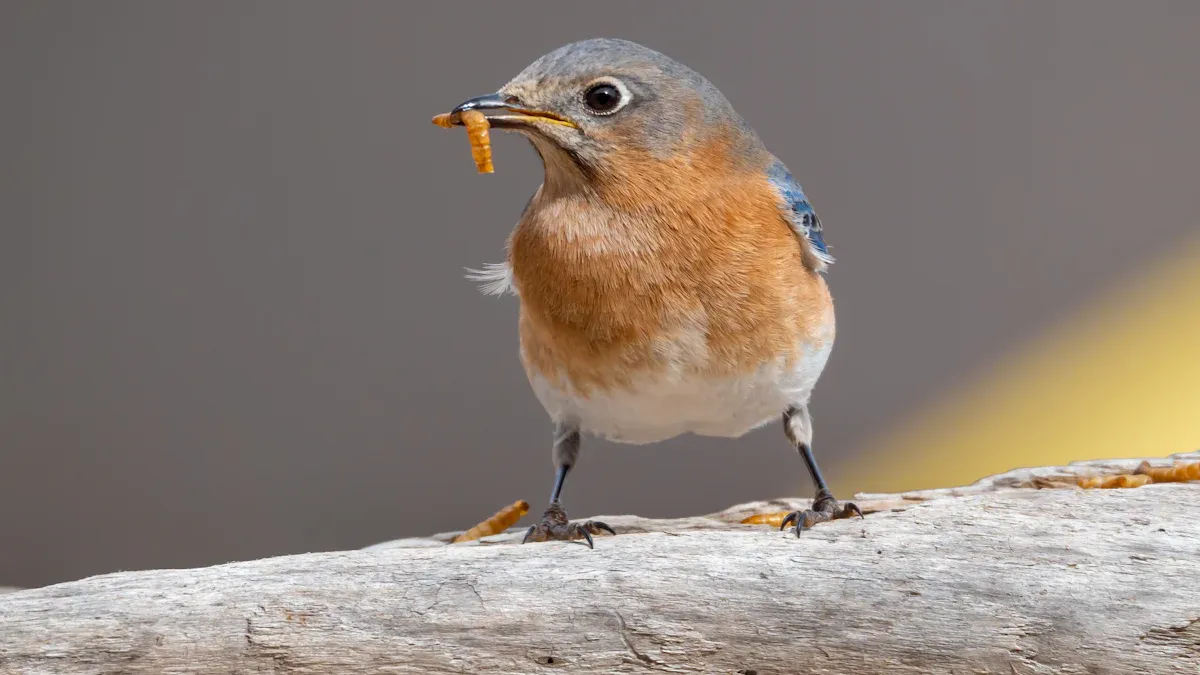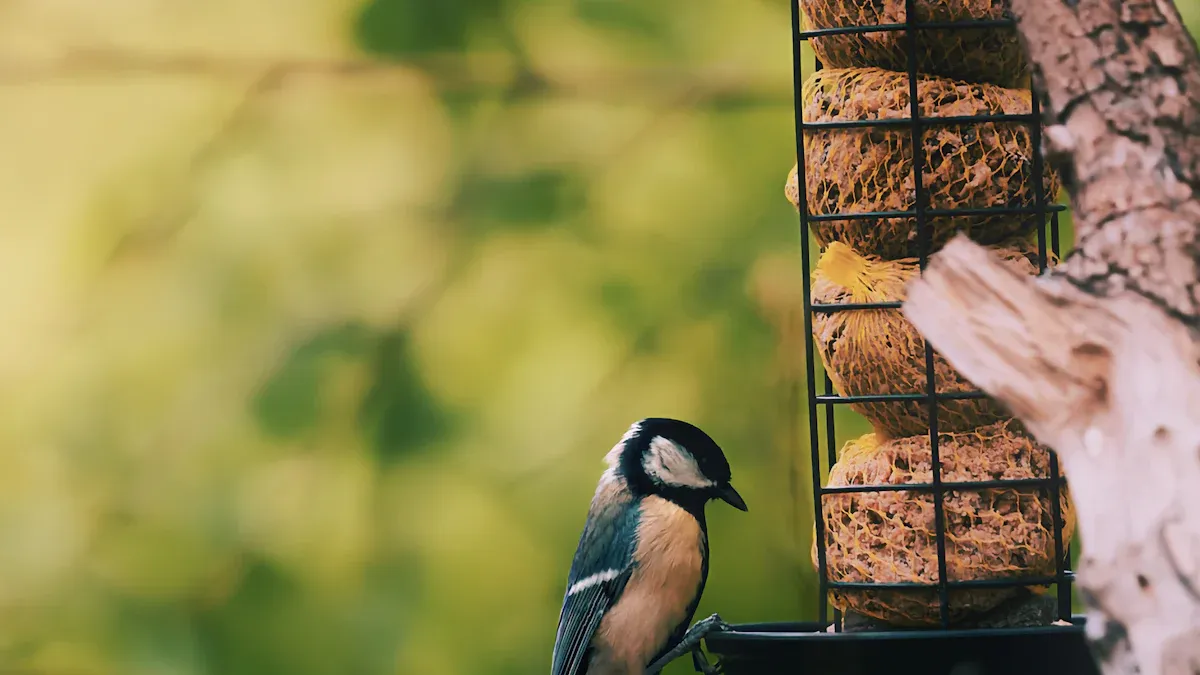
Bird feeding has become more than just a hobby—it’s a way to connect with nature and support local wildlife. With nearly 50% of U.S. households participating in bird feeding, the demand for innovative feeders continues to grow. Mealworm feeders, in particular, have gained popularity as they attract a variety of birds with their protein-rich offerings. This shift reflects a broader trend toward eco-friendly and functional designs, as the global bird feeder market is expected to grow by 8% annually over the next five years. A well-chosen bird mealworm feeder can make all the difference in creating a thriving backyard sanctuary.
Key Takeaways
- Pick a strong bird feeder made of metal or tough plastic. It should handle bad weather and last a long time.
- Get a feeder size that fits the birds in your area. Bigger feeders bring more birds and need fewer refills.
- Clean your feeder often to stop mold and germs. This keeps it safe for birds to eat from.
Criteria for Choosing the Best Bird Mealworm Feeder
Material and Durability
When selecting a bird mealworm feeder, material matters. Feeders made from metal or heavy-duty polycarbonate plastic are ideal for withstanding harsh weather. Metal feeders resist squirrel damage but may rust over time, while plastic options are lightweight and durable. Some feeders even use recycled materials, making them eco-friendly. A good feeder should last through seasons without cracking or fading. Trusted brands often prioritize durability, so checking reviews can help you find a reliable option.
Capacity and Size
The right feeder size depends on your backyard visitors. A small feeder works well for occasional birds, but larger feeders are better for attracting flocks. Consider how much space you have and how often you want to refill the feeder. Covered feeders protect mealworms from rain, ensuring they stay fresh. Observing your local bird population can guide you in choosing the perfect capacity.
Ease of Cleaning
A clean feeder keeps birds healthy. Look for designs that allow easy disassembly and access to all parts. Feeders made from stainless steel or smooth plastic are easier to clean and disinfect. Regular cleaning prevents mold and bacteria buildup, ensuring your feathered friends enjoy a safe meal.
Bird Compatibility
Not all feeders suit every bird species. Platform feeders attract a variety of birds, from blue jays to finches. Smaller feeders with narrow openings are perfect for chickadees and sparrows. Choosing a feeder designed for your target species ensures they can comfortably access the mealworms.
Price and Value for Money
Balancing cost and quality is key. While some feeders have a higher upfront cost, they often save money in the long run by reducing waste and lasting longer. Budget-friendly options like the Woodlink Going Green Platform Feeder offer durability and versatility without breaking the bank. Always consider the feeder’s features and how they align with your needs.
The Top 7 Bird Mealworm Feeders for 2025

Feeder #1: Kaytee Mealworm Feeder
The Kaytee Mealworm Feeder is a simple yet effective choice for bird enthusiasts. Its compact design makes it ideal for small spaces, while the durable plastic construction ensures it can withstand outdoor conditions. This feeder features a shallow dish that holds mealworms securely, preventing them from spilling. It’s perfect for attracting bluebirds, robins, and other insect-loving birds. The feeder’s transparent design allows birdwatchers to enjoy an unobstructed view of their feathered visitors.
Feeder #2: Perky-Pet Dried Mealworm Feeder
The Perky-Pet Dried Mealworm Feeder combines functionality with style. Its bright red color not only adds a pop of color to your backyard but also attracts birds like cardinals and woodpeckers. The feeder includes a mesh tray that keeps mealworms fresh and dry. Cleaning is a breeze thanks to its removable parts. This feeder is a great option for those looking to add a splash of vibrancy while supporting local bird populations.
Feeder #3: Nature’s Way Cedar Platform Feeder
Nature’s Way Cedar Platform Feeder stands out for its natural and durable design. Made from weather-resistant cedar, this feeder is built to last through harsh conditions. Its spacious seed tray attracts larger birds like cardinals and jays, making it versatile for various species.
- The open design offers a clear view of birds, enhancing the birdwatching experience.
- The mesh tray prevents mold by allowing proper drainage and ventilation.
- Constructed from insect- and rot-resistant cedar, it ensures long-term reliability.
This feeder is perfect for those who want a sturdy and eco-friendly bird mealworm feeder.
Feeder #4: Woodlink Bluebird Feeder
The Woodlink Bluebird Feeder is specifically designed to attract bluebirds. Its enclosed design features small entry holes that keep larger birds and squirrels out. The feeder includes a removable cup for holding mealworms, making refilling and cleaning simple. Its sturdy construction ensures it can handle outdoor elements. This feeder is a must-have for anyone looking to create a bluebird-friendly environment.
Feeder #5: Stokes Select Hanging Feeder
The Stokes Select Hanging Feeder is a versatile option for any backyard. Many users have praised its functionality, though some reported minor issues with bird access. Simple adjustments, like bending the roof or adding cardboard, have improved its usability. This feeder’s hanging design makes it easy to place in various locations, attracting a wide range of birds. It’s a practical choice for those who enjoy experimenting to optimize their birdwatching experience.
Feeder #6: Songbird Essentials Mealworm Feeder
The Songbird Essentials Mealworm Feeder is a compact and efficient option for smaller spaces. Its lightweight design makes it easy to hang, while the shallow dish ensures mealworms stay in place. This feeder is ideal for attracting smaller birds like chickadees and wrens. Its straightforward design focuses on functionality, making it a great choice for beginners.
Feeder #7: Droll Yankees Dome Feeder
The Droll Yankees Dome Feeder is a premium option for serious bird enthusiasts. Its classic tube design holds up to 5 pounds of seed, making it suitable for extended use. The weight-activated perch prevents squirrels from stealing food, ensuring birds get their share.
- The feeder comes with a lifetime warranty against squirrel damage, showcasing its durability.
- Over 5,200 positive reviews highlight its reliability and customer satisfaction.
- Trusted for over 50 years, Droll Yankees remains a top name in bird feeding.
This feeder is perfect for those seeking a high-quality, long-lasting bird mealworm feeder.
Tips for Using Bird Mealworm Feeders

Best Placement for Mealworm Feeders
Where you place your bird mealworm feeder can make a big difference in attracting birds. Birds feel safer when feeders are near trees or shrubs, as these provide cover from predators. However, placing feeders in sunny spots has its benefits too. Sunlight helps keep mealworms dry, reducing the risk of mold. Avoid areas prone to heavy moisture, as damp conditions can spoil the food quickly.
Birds are more likely to visit feeders in areas where food is scarce. Studies show that food availability directly impacts bird behavior and distribution. By placing your feeder strategically, you can create a reliable food source that birds will return to regularly.
How to Maintain and Clean Your Feeder
Keeping your feeder clean is essential for the health of visiting birds. Dirty feeders can harbor bacteria and mold, which may harm birds. To clean your feeder:
- Empty it completely before washing.
- Use warm, soapy water to scrub all parts.
- Rinse thoroughly and let it dry before refilling.
For stubborn grime, a diluted vinegar solution works wonders. Regular cleaning, at least once a week, ensures your feeder stays safe and inviting.
Attracting Specific Bird Species with Mealworms
Different birds have unique feeding preferences. Bluebirds and robins love mealworms, while chickadees and wrens also enjoy them. To attract specific species, choose a feeder designed for their size and habits. For example, bluebirds prefer feeders with small entry holes that exclude larger birds. Adding fresh mealworms occasionally can also increase your feeder’s appeal.
By understanding the needs of your local birds, you can create a welcoming environment that keeps them coming back.
Choosing the right bird mealworm feeder can transform any backyard into a birdwatcher’s paradise. Durable and affordable options, like the Woodlink Going Green Platform Feeder, stand out for their ease of use and versatility.
- Feeders with above-average performance at below-average prices offer the best value.
- Popular designs attract diverse bird species while ensuring long-term satisfaction.
Mealworm feeders provide a year-round way to nourish and enjoy birds.
FAQ
How often should a bird mealworm feeder be cleaned?
Clean the feeder at least once a week. Regular cleaning prevents mold and bacteria, keeping the birds healthy and the feeder safe for use.
Can mealworm feeders attract unwanted pests?
Yes, pests like ants or squirrels may visit. Use feeders with pest-resistant designs or place them in areas less accessible to these critters.
What type of mealworms should be used in feeders?
Dried mealworms work best. They’re easy to store, less messy, and still provide the protein birds need to thrive. Fresh mealworms are also an option for special occasions.
Tip: Sprinkle mealworms near the feeder initially to help birds discover it faster! 🐦


